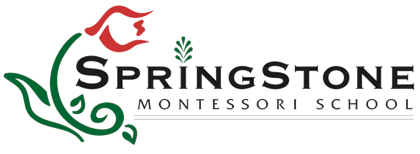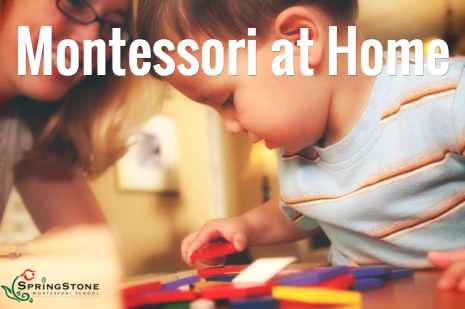Control of Error in a Montessori Learning Environment
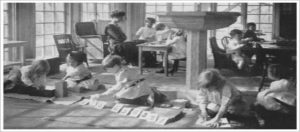
What does Control of Error mean?
It means that the teacher provides materials that allow the child to self-correct.
How would you feel if you tried something new, and someone told you, ‘You did not do it right’, or ‘It is all wrong’? Even when criticism is well-intentioned, it hurts!
Dr. Laurence C. Smith, a developmental clinical psychologist, suggests that, along with rejection and abandonment, criticism is one of the three most traumatizing psychological effects on an individual. Criticism reinforces the negative self-image of the individual being criticized.
How would you feel if you were almost done with your work, and the teacher came and completed the last piece of your work, not allowing you to figure it out on your own? Would you feel good about your accomplishment? You probably would just have needed a little extra time to review your ‘master’ material to check on your work and complete it.
Dr. Maria Montessori believed that the teacher must ‘give their lesson, plant the seed and then disappear, observing and waiting, but not touching.’
Why is Control of Error Such an Important Part of the Montessori Learning Environment?
Dr. Maria Montessori insisted that the teacher should NOT intervene in the work of a child. It does not matter whether it is to offer approval or correction. In Dr. Montessori’s words, ‘The teacher can destroy the good impulse of children by intervening, or at least her intervention will cause the real ‘ego’ of the child to withdraw within himself as a snail into its shell.’
When Control of Error is provided with the learning materials,
- the teacher does not intervene in the child’s work after the work has been presented to the child;
- the child receives instant feedback on their progress;
- the child is supported in their development of a healthy self-esteem;
- the child is motivated to try new things and take risks;
- the learning environment supports the child’s independence to complete work at their own pace on their own;
- the child can learn to recognize, understand, correct, and learn from the mistakes they make;
- the child can take control of their own learning and not rely on adult judgment;
- the child can sincerely feel their success in completing their work;
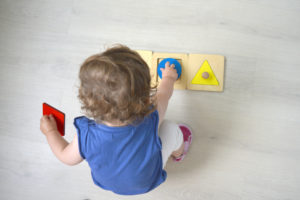
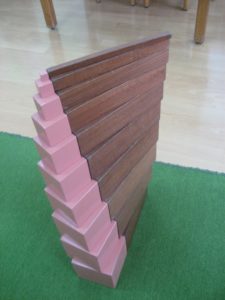
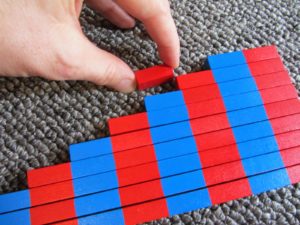
Here are some examples materials in a Montessori 3-6 environment with built-in Control of Error:
- Sensorial (If they are not built correctly, they do NOT fit)
- Pink Tower, Red Rods, Brown Stair, Cylinder Blocks
- Math (Number Rods – If they are not put together in the correct order, they do NOT fit)
- Practical Life (Pouring Jobs – Spills happen and need to be cleaned up)
- Cultural nomenclature work (Picture/Word cards are the masters to match individual pictures / words)
Please keep in mind that we are here to support all our children in their learning. When we constantly correct our children, we instill a fear of making mistakes. This will result in children staying away from new experiences and continued exploration. In addition, they will also most likely shy away from trying new or more challenging work.
When we allow for self-correction, children learn from their mistakes. We teach them that it is not about the right answers or the correct way of completing work.
It is all about our children learning to learn!
